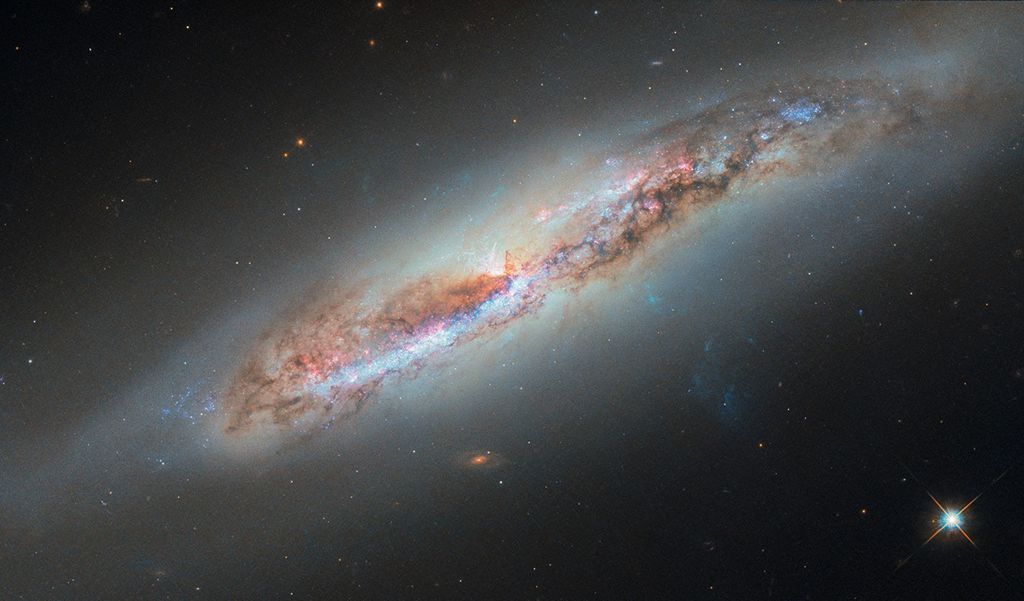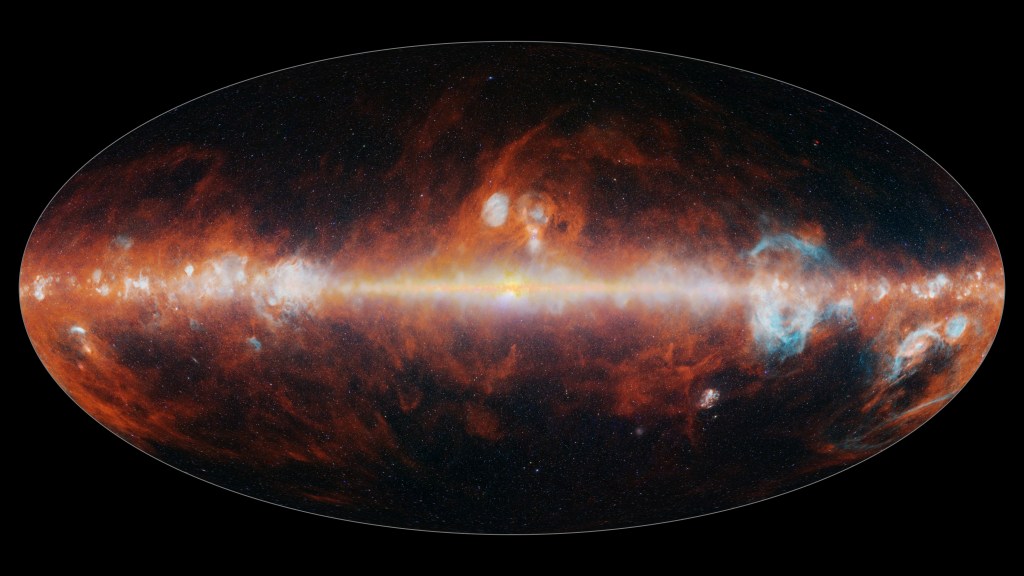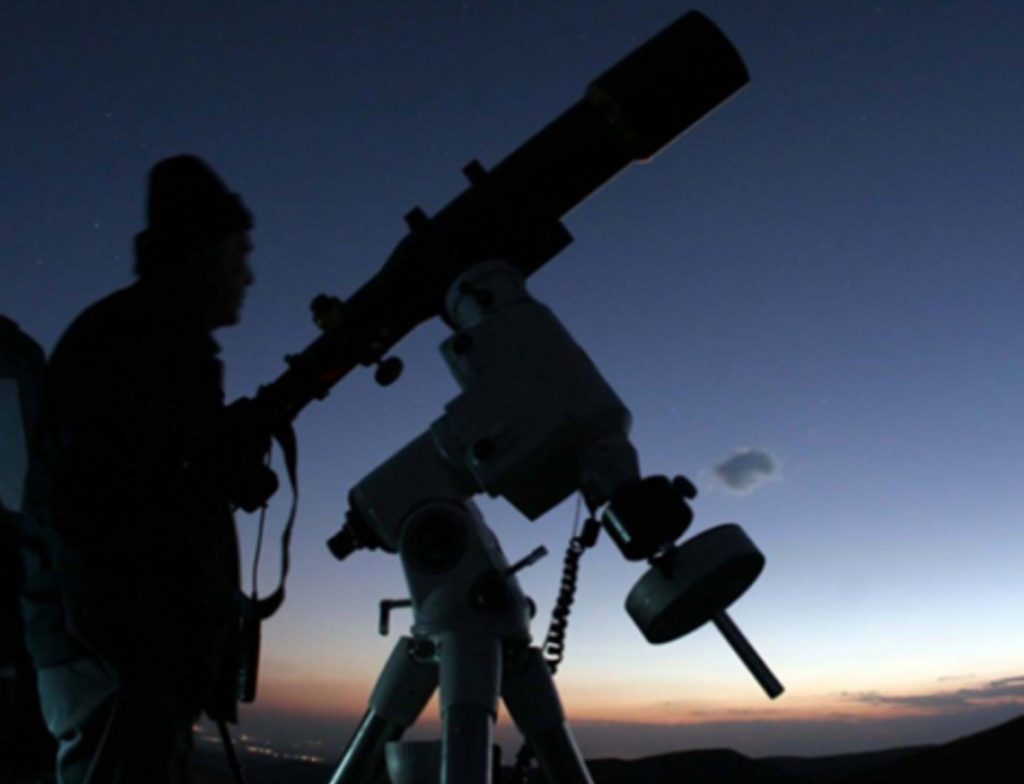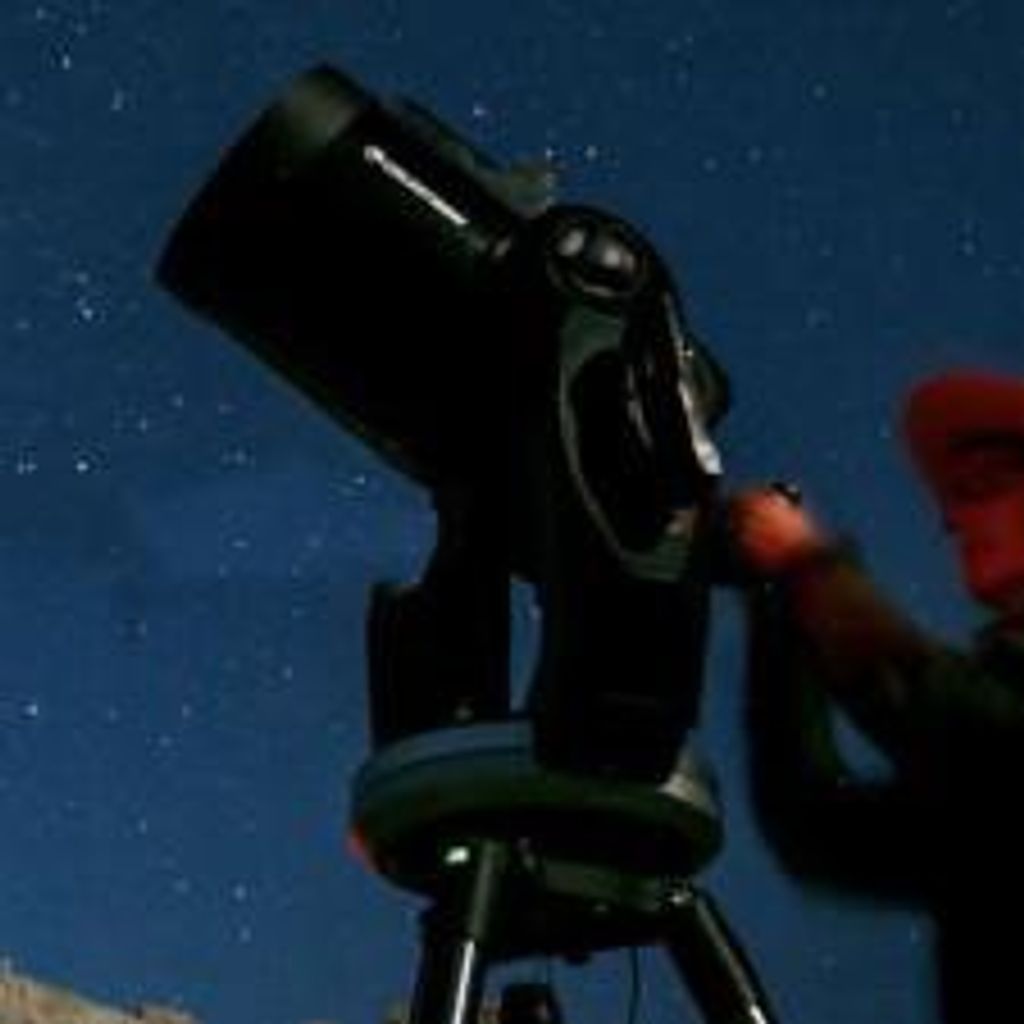1 min read
Exoplanet 51 Eridani b (Gemini)

This discovery image of a Jupiter-sized extrasolar planet orbiting the nearby star 51 Eridani was taken in near-infrared light in 2014 by the Gemini Planet Imager. The bright central star is hidden behind a mask in the center of the image to enable the detection of the exoplanet, which is 1 million times fainter than 51 Eridani. The exoplanet is on the outskirts of the planetary system 11 billion miles from its star. Its distance is equivalent to a location between the orbits of Neptune and Saturn in our solar system. The 51 Eridani system is 96 light-years from Earth.
Webb will probe the planet’s atmosphere at infrared wavelengths astronomers have rarely used to image distant worlds. Webb will also hunt for other distant worlds — possibly down to Saturn-size — on the outskirts of planetary systems that cannot be detected with ground-based telescopes.
Extended Description and Image Alt Text
Extended Description
The background is largely a medium blue. At top left, the label reads "Gemini/GPI." At the center is an opaque white circle with a black plus sign at its center, indicating where light from the central star was blocked. The star is labeled in large white text to its immediate left, "51 Eri." There is a dotted-white circle that surrounds the central star that takes up about a sixth of the overall image. To its top left is the label "Size of Saturn’s orbit around the Sun." Immediately around the opaque white circle are squiggles, which are observational noise. The squiggles are black, white, white-and-orange, and orange. They partially cover the blue background. A small white dot encircled by orange appears between 5 and 6 o’clock and is labeled "b." The orange and black flame-like noise squiggles continue, becoming less orange and more often black or gray toward the edges. The field of view of the telescope is circular, with solid blue areas in the corners of the square image indicating regions where there is no data. At bottom right, a white horizontal scale bar takes up less than one eighth of the image and is labeled "10 A U (astronomical units)."
Image Alt Text
Direct image of the exoplanet 51 Eridani b from the Gemini Planet Imager/GPI. In the center, against a largely blue background, is an opaque white circle indicating where light from the central star, 51 Eridani, was blocked. A dotted-white circle surrounds the central star and takes up about a sixth of the overall image. To the top left of the dotted circle is the label "Size of Saturn’s orbit around the Sun." A small white dot appears between 5 and 6 o’clock and is labeled "b."
About the Object
- R.A. PositionR.A. PositionRight ascension – analogous to longitude – is one component of an object's position.04 37 36.13
- Dec. PositionDec. PositionDeclination – analogous to latitude – is one component of an object's position.-02 28 24.79
- DistanceDistanceThe physical distance from Earth to the astronomical object. Distances within our solar system are usually measured in Astronomical Units (AU). Distances between stars are usually measured in light-years. Interstellar distances can also be measured in parsecs.Exoplanet is approximately 96 light-years away
About the Data
- Data DescriptionData DescriptionProposal: A description of the observations, their scientific justification, and the links to the data available in the science archive.
Science Team: The astronomers who planned the observations and analyzed the data. "PI" refers to the Principal Investigator. - InstrumentInstrumentThe science instrument used to produce the data.Gemini>Gemini Planet Imager
- Exposure DatesExposure DatesThe date(s) that the telescope made its observations and the total exposure time.18 December 2014
- Object NameObject NameA name or catalog number that astronomers use to identify an astronomical object.51 Eridani b
- Object DescriptionObject DescriptionThe type of astronomical object.Exoplanet
- Release DateApril 21, 2021
- Science ReleaseNASA’s Webb to Study Young Exoplanets on the Edge
- CreditImage: Gemini Observatory, NSF's NOIRLab, NSF, AURA, Julien Rameau (University of Montreal), Christian Marois (NRC Herzberg)
Related Images & Videos
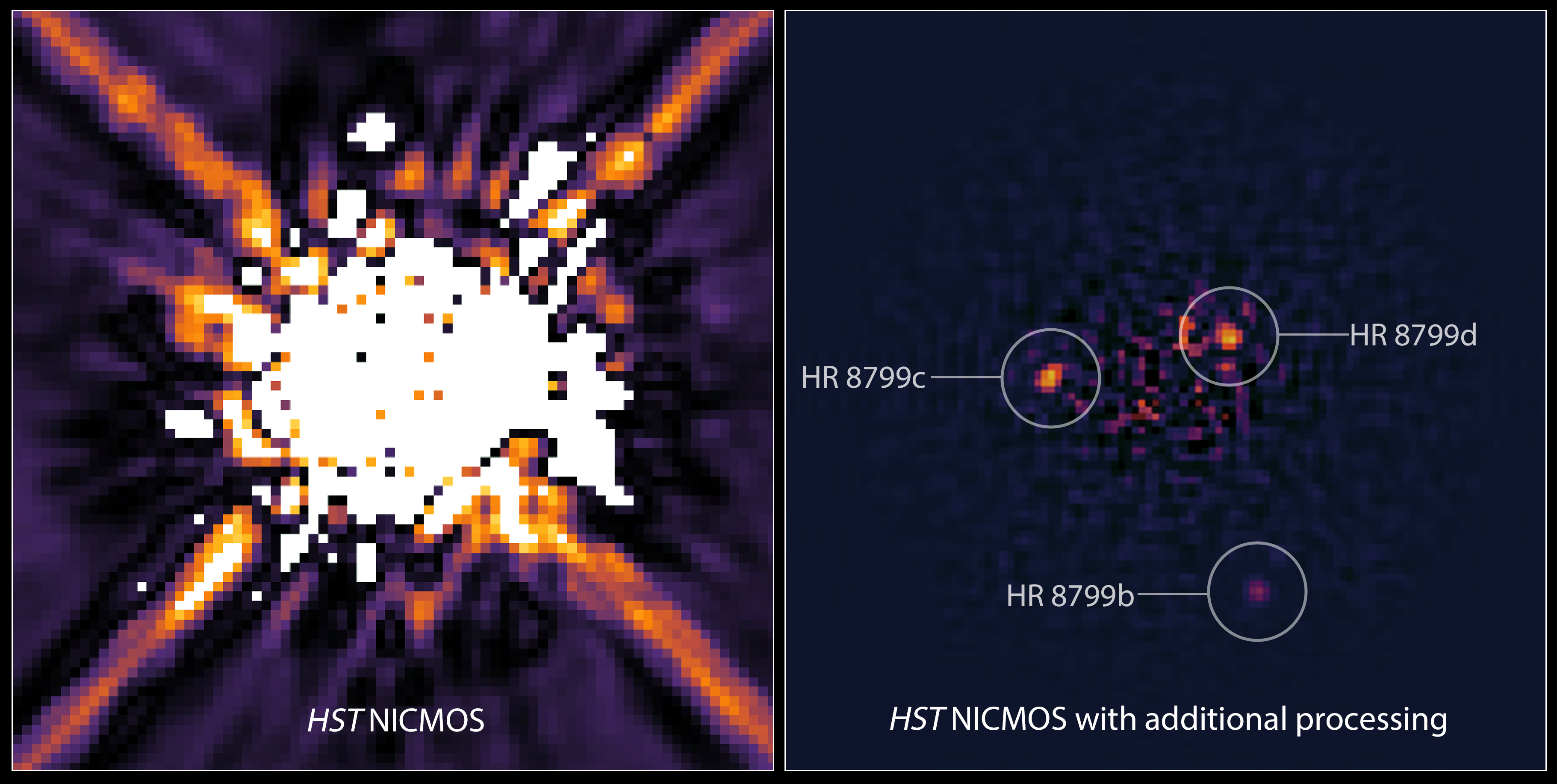
HR 8799 Exoplanet System (Hubble)
Left: This is an image of the star HR 8799 taken by Hubble's Near Infrared Camera and Multi-Object Spectrometer (NICMOS) in 1998. A mask within the camera (coronagraph) blocks most of the light from the star. Astronomers also used software to digitally subtract more starlight....

HR 8799 Exoplanet System: Positional Schematic
This schematic shows the positions of the four exoplanets orbiting far away from the nearby star HR 8799. The orbits appear elongated because of a slight tilt of the plane of the orbits relative to our line of sight. The size of the HR 8799 planetary system is comparable to our...

Planets Orbiting HR 8799
This video shows four Jupiter-sized exoplanets orbiting billions of miles away from their star in the nearby HR 8799 system. The planetary system is oriented face-on toward Earth, giving astronomers a unique bird’s-eye view of the planets’ motion. The exoplanets are orbiting so...

Planet Orbiting 51 Eridani
This video shows a Jupiter-sized exoplanet orbiting far away — roughly 11 billion miles — from a nearby, Sun-like star, 51 Eridani. The planetary system is oriented face-on toward Earth, giving astronomers a unique bird’s-eye view of the planet’s motion. The video consists of...
Share
Details
Laura Betz
NASA’s Goddard Space Flight Center
Greenbelt, Maryland
laura.e.betz@nasa.gov
Gemini Observatory, NSF’s NOIRLab, NSF, AURA, Julien Rameau (University of Montreal), Christian Marois (NRC Herzberg)

